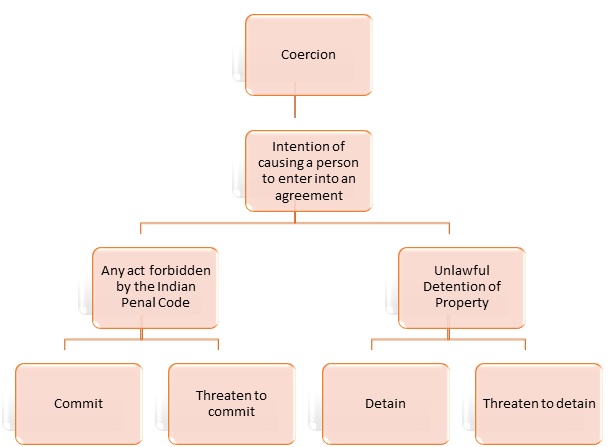Acceptance: Section 2(b) of the Indian Contract Act,1872
In the previous article of #tuesdayteachings we discussed the first essential of an agreement- the concept of PROPOSAL under Indian Contract Act, 1872. In the following article, we will be discussing the next essential of an agreement i.e.- ACCEPTANCE.
ACCEPTANCE:-
Section 2(b) defines acceptance as,
“When the person to whom the proposal is made signifies his assent thereto, the proposal is said to be accepted. A proposal, when accepted, becomes a promise.”
Thus, acceptance is the final unqualified approval of a proposal that is capable of transforming the proposal into a promise vis-à-vis. an agreement.
COMMUNICATION OF ACCEPTANCE:
The definition of acceptance clearly specifies that the assent should be communicated. Section 3 of the Contract act states that it may be expressed by the promisee by an act or omission by which he intends to communicate his assent or which has the effect of communicating it. External indication along with mental determination is necessary. The external manifestation of acceptance can be signified either in the form of words, written or spoken, or through conduct.
§ Mode of Communication-
Section 7(2) of the Indian Contract Act specifies that “the acceptance of a proposal must be expressed in some usual and reasonable manner, unless the proposal prescribes the manner in which it is to be accepted. If the proposal prescribes a manner in which it is to be accepted and the acceptance is not made in such manner, the proposer may, within a reasonable time after the acceptance is communicated to him, insist that his proposal shall be accepted in the prescribed manner, and not otherwise; but, if he fails to do so, he accepts the acceptance.”
Thus, acceptance is to be expressed in the manner prescribed by the promisor. Where it is specified by the promisor that the acceptance should be made in some particular manner, an acceptance given in any other manner may not be effective. This principle was first laid down in an American case Eliason v. Henshaw,
X proposed to buy flour from Z and requested that the acceptance should be sent by the wagon which brought the offer. Z mailed his acceptance assuming that it would reach X before the wagon. However, the letter signifying the acceptance of Z reached X after the arrival of the wagon. The court held that A was not bound by the acceptance.
Section 7(2) requires that the acceptance should be made in the manner prescribed by the offeror. However, unlike in the above case failing to do so does not in itself invalidate the acceptance. The offeror is supposed to refuse such acceptance within a reasonable period of time and if he fails to do so, the contract is supposed to be final and binding.
If no particular mode of acceptance is prescribed, acceptance must be communicated in some usual and reasonable manner. In such cases, mail is a very reasonable manner.
Postal Rule of Acceptance:
The postal acceptance rule was laid down in Adams v. Lindsell. In this case,
On September 2, 1817, the defendants communicated an offer to sell wool by a letter to the plaintiffs which was received by them on September 5. The letter included ‘receiving your answer in course of post'. On the same evening, the plaintiff wrote an answer accepting the offer which reached the defendants on September 9. The defendants not having received the acceptance by September 8 sold the wool to other parties. The plaintiff sued them for breach of contract. The defendants contended that the contract was not complete until they received the plaintiff’s answer. The court said, if they accepted the defendant’s contention, no contract could ever be completed by post. For if the defendants were not bound until they received the acceptance letter, the plaintiffs were not bound until they received the notification of the defendants receiving the acceptance letter and this might go on endlessly. The judges thus finally held that a complete contract arises on the date when the letter of acceptance is ‘posted’ in due course.
The Indian rule in this regard is a peculiar modification of the English rule. According to section 4, when a properly addressed and adequately stamped letter of acceptance is posted and is out of the power of the acceptor, the proposer becomes bound. The acceptor is bound, however, only after the letter is received by the proposer unlike the English rule where both the offeror and the offeree are bound at the time the letter of acceptance is posted.
§ Acceptance by conduct-
An illustration of acceptance by ‘conduct’ is the case of Brogden v. Metropolitan Railway Co.:
The facts of the case are that B supplied coal to a railway company without a formal agreement and he proposed that a formal written contract be made. The agents of both parties met and discussed the terms of the contract. The railway company drafted the contract and sent it to B. It had some blanks which were to be filled by B when it was sent to him for his approval. He filled the blanks, listed the name of the arbitrator and then returned it to the company stamping the document as approved. The agent of the company filed the documents and put it in his drawer without the final approval being signified. B kept up his supply of coals on the terms of the formal agreement and he was also paid according to those terms. A dispute was raised and B refused to be bound by the agreement stating that there was no final acceptance by the company.
The House of Lords held that, the conduct of the company’s agent filing the documents was conclusive evidence that he had mentally accepted it. Even though he had not signified his mental determination, the subsequent conduct of the parties in supplying and accepting coal on the basis of the terms of the new agreement was evidence that manifested their intention. Lord Cairns said, “The final acceptance was clearly given when the company commenced a course of dealing which is referable only to the contract and when that course of dealing was accepted and acted upon by B in the supply of goods.”
Another valid form of acceptance by conduct is an act done by the acceptor in terms of the offer. This principle is based on the concept of general offers. All cases of general offers which are unilateral contracts stipulate the performance of some act in return for the promise to pay. When a person then performs the specific act, the proposer is bound to pay. Section 8 of the contract act recognises this principle. It states that “performance of the conditions of a proposal, or the acceptance of any consideration for a reciprocal promise which may be offered with a proposal, is an acceptance of the proposal”. For example- Announcement to pay reward for returning a lost thing is an offer of this kind (Lalman Shukla v. Gauri Dutt). The offeror may have acquiesced in certain conduct on the part of the acceptor as equivalent to acceptance.
This was recognised in the case of Carlill v. Carbolic Smoke Ball Co. The court, in this case, opined that it is not necessary to communicate the acceptance of such offer to the offeror. The performance of the condition specified in an offer is sufficient acceptance without notification.
§ Silence as Acceptance-
It is a general rule, that if the offeree does nothing in respect to the offer he is not bound by the terms of the offer. It was laid down in Felthouse v. Bindley, that the nephew’s silence did not constitute as acceptance of the offer made by his uncle to buy the horse(The case is discussed in detail below). Law does not cast a duty on the person to whom a proposal is made to reply to that proposal, and hence acceptance cannot be inferred from the silence of the offeree and thus a proposal is not accepted by mere silence on the part of the offeree.
However, acceptance can be inferred from silence in exceptional circumstances:
- where the offeree intends to accept a proposal continuing such a stipulation and complies with the proposal by remaining silent, namely, where the offeree has previously agreed that his silence shall be acceptance. (Goddarmal Hiralal v. Chandrabhan Agarwal & Co)
- if silence is reinforced by conduct, it may constitute acceptance. Where a tenant was offered a renewal of the tenancy at a higher rent, his continuing to stay constituted acceptance.
- silence may constitute acceptance by custom of trade or business in question.
§ Communication to the offeror himself-
The acceptance of the proposal should be communicated to the offeror himself. The effect of communication to any other person is as if communication has not been made. A landmark case identifying this principle is Felthouse v. Bindley. In this case, the plaintiff sent a letter to his nephew offering to purchase his horse. The letter said: if I hear no more about the horse, I consider the horse mine at £33.15. No reply was sent to this letter by the nephew, but he conveyed it to his auctioneer, not to sell his horse. The auctioneer by mistake sold the horse. The plaintiff initiated action against the auctioneer claiming that his unauthorised sale amounted to a conversion of his property as under the contract the horse was now his property. His action failed. The court said, “It is clear that the nephew in his own mind intended the uncle to have the horse, but he had not communicated his intention to the uncle.” The court laid down that the rule that the communication of acceptance of an offer should be made to the offeror himself or his authorised agent. A communication to a stranger i.e. the auctioneer in this case is not enough and thus there was no final and binding agreement.
Another example, A makes an offer to B in a telephonic conversation. Before B could signify his acceptance the line goes dead. In this case, as the offeror did not actually hear B accepting the offer there is no contract. (Entores Ltd v. Miles Far East Corporation)
§ Communication by acceptor himself-
Communication of acceptance should be from the acceptor himself or from any other person who is authorised by the acceptor to accept on his behalf. Any information received from any other unauthorised stranger is not effective. This principle was laid down in the case of Powell v. Lee. The plaintiff, in this case, applied for the post of headmaster of a school. A resolution was passed by the managers of the school appointing the plaintiff for the post, but the decision was not communicated to him officialy. However, one of the them communicated the decision to him in his individual capacity. The resolution was later cancelled by the managers and the plaintiff subsequently initiated action for breach of contract. The court rejected the action and observed that;
“there must be acceptance from the contracting party in some way. Information by an unauthorised person is as insufficient as overhearing from behind the door.”
ABSOLUTE ACCEPTANCE:
Section 7 of the Contract Act provides that, "in order to convert a proposal into a promise, the acceptance must be absolute and unqualified". This is referred to as the ‘mirror image’ rule which requires the acceptance communicated to be absolute, unqualified and correspond with the terms of the original offer to convert it into a promise.
§ Counter proposal-
Any variation in the terms of the offer invalidates the acceptance unless it is agreed upon by the offeror. Simply put, ‘an acceptance with a variation is no acceptance.’ Such acceptance wherein a departure from the original terms is seen is a counter-proposal which must now be accepted by the original offeror(new offeree) for the contract to be binding. A counter-offer amounts to a rejection of the offer and brings the original proposal to an end. An important case law in this regard is the case of Hyde v. Wrench.
The defendant offered to sell his farm to the plaintiff for £1000. The plaintiff said that he would give £950 but the defendant refused. The plaintiff then agreed to give £1000, but the defendant declined to adhere to his original offer. The court, in this case, held that the plaintiff’s offer to buy at £950 in response to the defendant’s offer was a refusal followed by a counter proposal and thus no contract had come into existence. The plaintiff was not afterward competent to revive the original proposal of the defendant. Therefore, there existed no obligation between the parties. Thus this case laid down the rule that the original proposal cannot be reinforced by a consequent acceptance.
A mere inquiry into the terms of an offer is not a counter offer. In Stevenson Jacques & Co. v. McLean, the proposal made was “I would now sell for 40s. net cash, open till Monday”. An offeree inquired about the possible terms of credit which was assumed as rejection of the proposal by the offeror. Subsequently, the offeror sold off the goods. The court held that an inquiry about the technical details of a proposal is not a counter-proposal which should have been answered and not treated as a rejection of the offer.
Seeking clarifications about the proposal, or acknowledging the proposal, or stating that the proposal was duly placed, or that the offeree will respond within a specified time, or that the offeree was making arrangements does not amount to acceptance.
Therefore, acceptance of a proposal would be valid and binding when it is absolute, unqualified, and communicated to the offeror in the prescribed manner or any other reasonable manner.
When a proposal is accepted it becomes a promise and consequently an agreement.
References:
1. Indian Contract Act, 1872.
2. Pollock & Mulla, The Indian Contract and Specific Relief Acts, 16th edition.
3. Avtar Singh, Contract and Specific Relief, 12th edition.
4. Anson’s Law of Contract, 29th edition.
5. Halsbury’s Laws of India Contract, 2e 2015.
6. Eliason v. Henshaw, (1819) 4 Wheaton 225 (USA).
7. Adams v. Lindsell, (1818) 1 B & Ald 681; 106 ER 250.
8. Brogden v. Metropolitan Railway Co., (1877) 2 App Cas 666.
9. Carlill v. Carbolic Smoke Ball Co., (1893) 1 QB 256 (CA).
10. Goddarmal Hiralal v. Chandrabhan Agarwal & Co, AIR 1968 All 292.
11. Felthouse v. Bindley, (1862) 11 CBNS 869; (1863) 7 LT 835.
12. Entores Ltd v Miles Far East Corporation, (1955) 2 QB 327; (1955) 3 WLR 48.
13. Powell v. Lee, (1908) 99 LT 284.
14. Hyde v. Wrench, (1840) 3 Beav 334; 49 ER 132.
15. Stevenson, Jacques & Co. v. McLean, (1880) 5 QBD 346.



Comments
Post a Comment